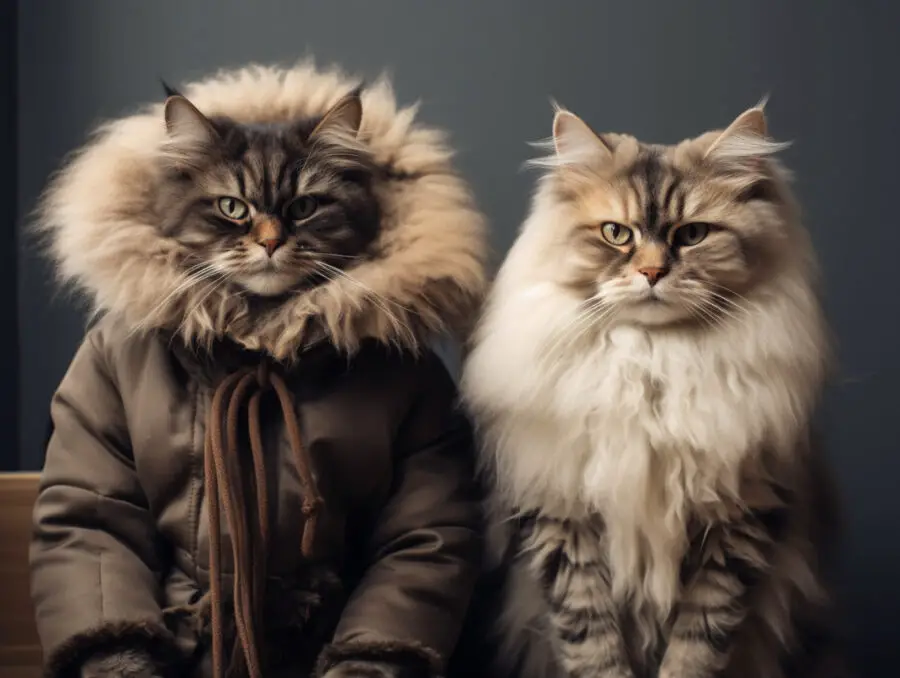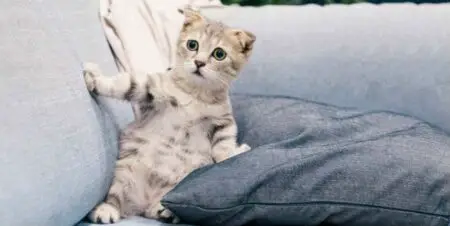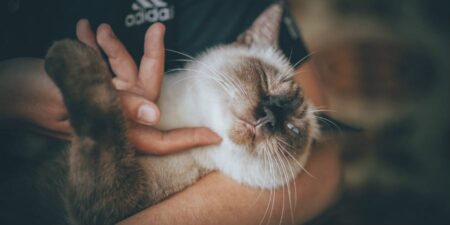Do cat’s fur pattern to change as they age? This question might have crossed the minds of many cat owners, especially those who notice subtle differences in their pet’s appearance over time. The answer to this question is both fascinating and complex, with several factors playing a role in fur pattern variations.
Understanding Your Cat’s Fur
Firstly, it’s essential to understand that a cat’s fur consists of two main parts: the hair shaft, which is the visible part of the fur, and the hair follicle, which is responsible for producing the hair shaft. The color and pattern of a cat’s fur result from the distribution of pigment-producing cells called melanocytes within the hair follicles. As cats age, the activity of melanocytes can change, leading to alterations in fur color and pattern.
One reason a cat’s fur pattern might appear to change over time is a phenomenon called ‘fever coat.’ Fever coat occurs when a pregnant cat experiences stress or illness, which affects the development of her unborn kittens’ fur. The kittens may be born with a lighter-colored or patchy coat, which typically changes to a more standard pattern as they grow. Although fever coat does not cause any harm to the kittens, it’s a reminder of the importance of proper prenatal care for pregnant cats.
Another factor that can influence a cat’s fur pattern is its diet. Certain nutrients, such as tyrosine, play a critical role in melanin production – the substance responsible for pigmentation in hair, skin, and eyes. A deficiency in tyrosine or other essential nutrients may cause a cat’s fur to appear faded or even change color entirely. On the other hand, an improvement in diet could lead to a richer, more vibrant fur pattern.
Age is also a contributor to changes in a cat’s fur pattern. As cats get older, melanocyte activity may decrease, causing their coats to become lighter or develop patches of white or gray. This change, similar to humans going gray over time, is entirely normal and a sign of the natural aging process.
In some cases, fur pattern changes might be linked to a medical condition, such as skin infections, allergies, or hormonal imbalances. These factors can cause hair loss or discoloration, leading to noticeable changes in a cat’s appearance. If you suspect that your cat’s fur pattern changes are due to a health issue, it’s important to consult a professional for advice and appropriate treatment.
Finally, it’s worth noting that some cat breeds are more prone to fur pattern changes than others. For example, Siamese cats are known for their unique color points, which darken over time. This change occurs due to a temperature-sensitive enzyme involved in melanin production, causing the fur on their extremities to darken as they mature.
Conclusion
So, can a cat’s fur pattern change with time? The answer is yes, under various circumstances. Fever coat, diet, aging, medical conditions, and genetics all play a role in the ever-evolving appearance of your furry companion. While some changes are normal and expected, it’s essential to keep an eye on your cat’s overall health and consult a professional if you have concerns.
Why Is Your Cat’s Coat Changing Color? (Video)
Related Questions
1. Do cats’ fur patterns change naturally as they age?
Yes, a cat’s fur pattern can change over time, but the changes are usually subtle and gradual. Factors such as genetics, aging, and exposure to sunlight can influence the pigmentation and distribution of colors in a cat’s fur. Newly grown hair may have slight variations in color and pattern, making these changes more noticeable over time.
2. Can health conditions affect a cat’s fur pattern?
Absolutely, certain health conditions can lead to alterations in a cat’s fur pattern. For example, skin infections, allergies, or hormonal imbalances can cause hair loss, making the pattern appear different as new hair grows in. In some cases, specific treatments or medications may also cause changes in fur color or pattern.
3. Is it possible for a cat’s fur pattern to change due to external factors?
Yes, a cat’s fur color and pattern can be affected by external factors such as sunlight and temperature. Sun exposure can lighten the fur, especially in cats with dark coats, while colder temperatures can cause some breeds to develop a thicker and darker coats. These factors, combined with the natural aging process, can contribute to changes in a cat’s fur pattern over time.
4. Can a cat’s fur pattern change after grooming or shaving?
It’s possible for a cat’s fur pattern to appear different after grooming or shaving, but this is usually temporary. As the fur grows back, the original pattern should return. However, if the cat’s skin has been damaged or irritated during the grooming process, it can potentially affect the growth of new hair and lead to subtle changes in the fur pattern.
5. Is there a specific age when a cat’s fur pattern is more likely to change?
While there isn’t a specific age when fur pattern changes are more likely to occur, older cats may experience more noticeable variations. As cats age, their fur can become thinner and less vibrant, which can give the appearance of a modified pattern. Additionally, age-related health issues may also contribute to changes in fur color and pattern.
"In ancient times cats were worshipped as gods; they have not forgotten this."
-- Terry Pratchett





